
Soon (when I learn how to edit graphics) this all too typical Earth
will show where we have been in the Pacific, the Atlantic, and Iceland
![]()
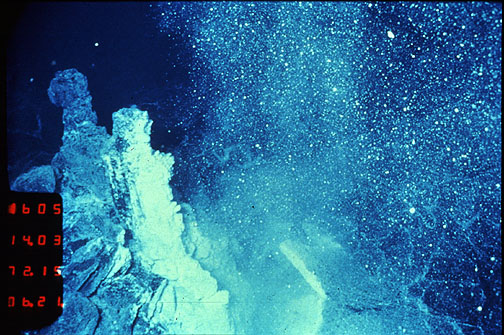
Hot vents (350 C) exist along mid-ocean ridges. These are sites where
cold seawater penetrates the oceanic crust and is heated by axial magma
chambers. This particilar vent is near 9 degrees north on the East Pacific
Rise and the image is courtesy of Dr. Rachel Haymon of UCSB. The vent shown
was discovered shortly after a volcanic eruption.![]()

Recently it was discovered that the eruption of seafloor basalts was
accompanied by "blooms" of critters that usually live beneath the seafloor.
The critters are the white stuff (lots, huh?) and the recently erupted
basalts is the black stuff. Image from about 2500 m depth along the East
Pacific Rise near 9 N, again courtesy of Rachel Haymon.![]()

In our group, we go to sea to deply ocean bottom seismometers which
we use to record seismic energy from controlled (airguns) and natural sources
(earthquakes). The image shows an OBS being deployed on the Mid-Atlantic
Ridge near 29 N. Instruments such as this one are deployed for periods
of days to months, in this case to record microearthquakes that accompany
the tectonic and magmatic activity of a slow-spreading ridge.![]()
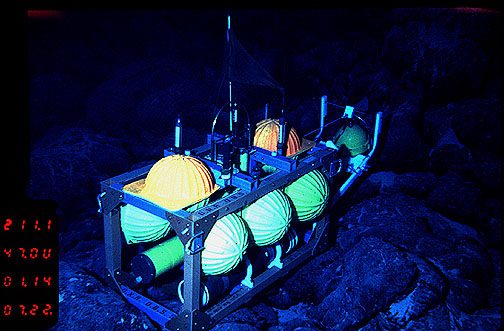
This unique image, taken from the port hole of the DSV (Deep Submergence
Vehicle) Alvin, shows a three-component ocean bottom seismometer sitting
on pillow basalts. The site is the axial valley of the Mid-Atlantic Ridge
at a depth of about 3000 m. The instrument was recovered shortly after
this photo was taken by using Alvin to nudge it loose.![]()
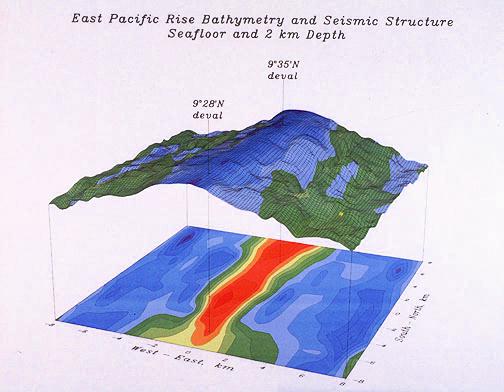
This tomographic image shows several features: (1) The bottom plane
shows a cross-section at a depth of 2 km beneath the seafloor, or approximately
through the center of an axial magma chamber. The colors depict anomalously
low (reds) or high (blues) P wave seismic velocities. The velocities of
seismic waves are affected by physical properties such as temperature,
degree of partial melt, and porosity (among others). The hot magma at this
depth is indicated by the region of low velocities (red). (2) The upper
mesh shows a combination of seafloor bathymetry with the superposed colors
indicating anomalous seismic velocities near the seafloor. The axial high
(see mesh) ![]()
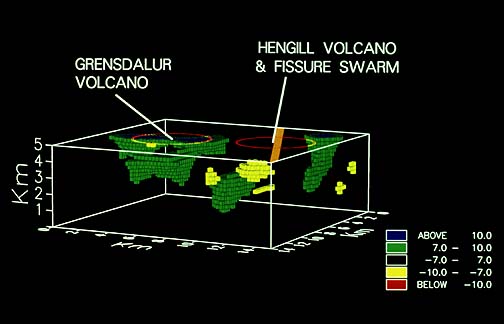
A perspective view of the Hengill volcano in Iceland. A first
and memorable foray into collaborative science.
![]()
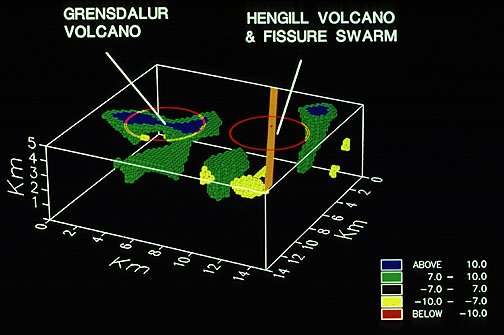
A second perspective view of Hengill. Green and blue regions are
anomalously high velocities that coincide with the roots of the Hengill
and Grensdalur volcanoes.
![]()
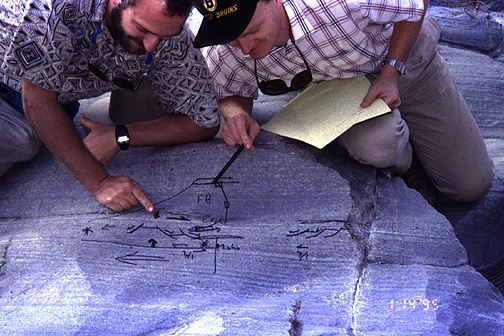
Geophysicists in the Oman ophiolite discovering just how easy it is to read the rock record!
![]()

And off we go, another long transit.
![]()